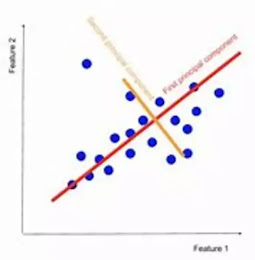Principal Component Analysis Algorithm
Principal Component Analysis Concept
Principal Component Analysis (PCA) is a dimensionality reduction technique used to transform high-dimensional datasets into a lower-dimensional space while preserving as much of the variance as possible. It works by identifying the principal components that capture the most significant variation in the data and projecting the data onto these components.
Suppose we have a dataset of images with 1000 pixels each. We want to reduce the dimensionality of the dataset to 100 pixels to reduce the computational complexity. We use PCA to identify the principal components that capture the most significant variation in the images. We project the images onto these components to obtain a lower-dimensional representation of the images.
Principal Component Analysis Algorithm
- Define the problem and collect data.
- Compute the covariance matrix of the data.
- Compute the eigenvectors and eigenvalues of the covariance matrix.
- Choose the top k eigenvectors with the largest eigenvalues.
- Transform the data into the new k-dimensional space defined by the eigenvectors.
- Evaluate the model on a test dataset to estimate its performance.
Here is a sample Python code for the PCA algorithm using the sci-kit-learn library:
python code
from sklearn.datasets import load_iris
from sklearn.decomposition import PCA
import matplotlib.pyplot as plt
# Load the iris dataset
iris = load_iris()
# Create a PCA object
pca = PCA(n_components=2)
# Fit and transform the data
X_pca = pca.fit_transform(iris.data)
# Plot the data in the new 2D space
plt.scatter(X_pca[:, 0], X_pca[:, 1], c=iris.target)
plt.label('PCA Component 1')
plt.label('PCA Component 2')
plt.show()
Advantages of PCA Algorithm:
- The algorithm is computationally efficient.
- The algorithm is simple to implement.
- The algorithm is resistant to anomalies and noise.
- The algorithm can handle missing values.
Disadvantages of the PCA Algorithm:
- It could be challenging to interpret the primary components.
- The choice of the number of principal components can be subjective.
- The algorithm may not work well for non-linearly separable data.
- The algorithm may not be suitable for datasets with categorical variables.
Main Contents (TOPICS of Machine Learning Algorithms)
CONTINUE TO (K-Means clustering algorithm)



Comments
Post a Comment